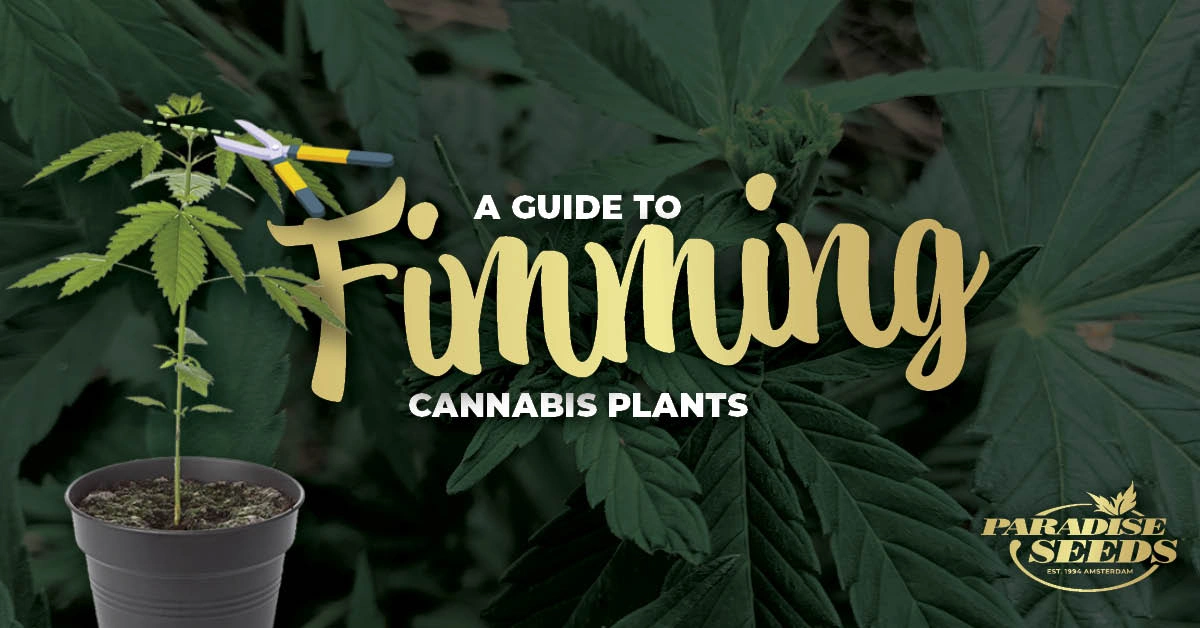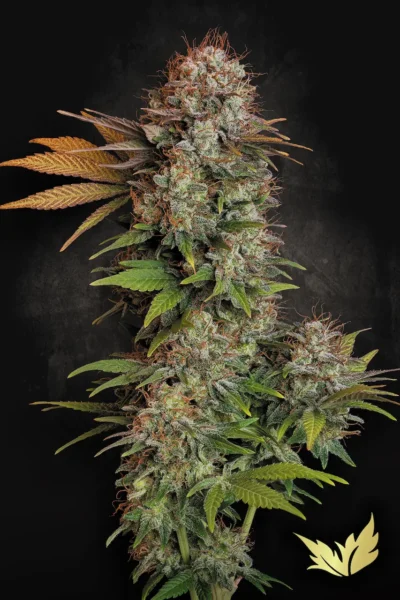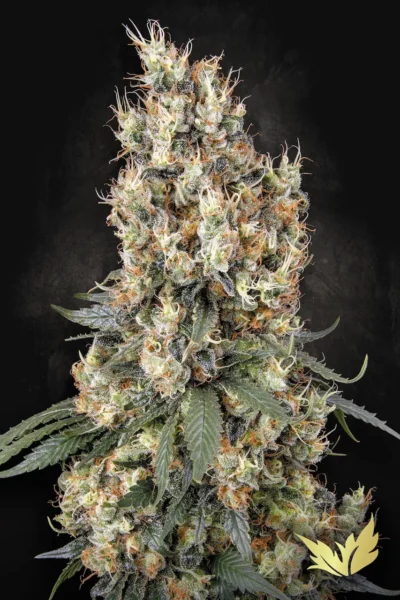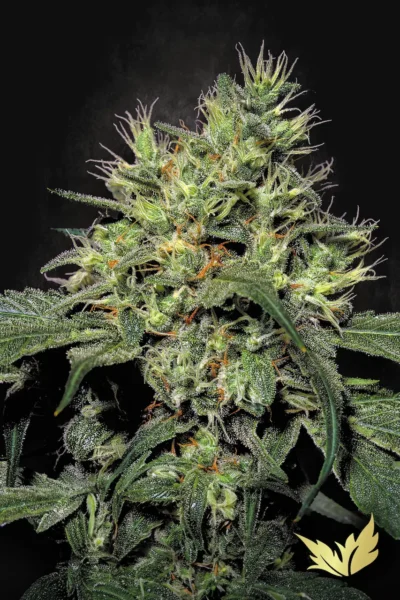There are many ways to train Cannabis plants during the vegetative stage of 18/6. This article teaches you how to FIM and top Cannabis plants. These basic plant training methods will encourage bushy and compact flowering plants by encouraging horizontal growth which allows the plants to fill out.
In this article we give a guide to fimming and topping cannabis plants, how each process works, and gives a step by step explanation of how to perform them correctly, along with the benefits associated and the mistakes to avoid.
Cannabis Plants and Apical Dominance Explained
Before we discuss about how to FIM and top Cannabis, it is important to understand the meaning of apical dominance.
This refers to a dominant central stem will grow and this is the case with Cannabis plants, due to a growth hormone named auxin. This is the same hormone that is responsible for vertical growth and how much the plants will stretch once the lights have been changed to 12/12.
There are other ways to disrupt the flow of auxin when growing Cannabis plants, and one of those is to top (or pinch out) the top growth shoot, by leaving behind the two small auxiliary shoots to grow as a symmetrical pair.
Cannabis topping vs fimming
The way that fimming Cannabis differs to topping is by purposely leaving 30% of the top shoot remaining on the plant, then allowing the plants to focus their energy on the remaining lower foliage. As strange as the word sounds, the origin of fimming came from the name given to a failed topping / pinching technique.
Growers who were unable to get a clean top shoot removal, would end up saying “ F**k…I missed!“ which was then turned into the noun FIM, which became the stem of the verb which forms ‘fimming’ and is now part of Cannabis vocabulary across the world.
The Benefits Associated with Fimming Cannabis
- Growers with limited height may find fimming a useful technique for keeping the final plant height short, with a bushy and thick lower canopy.
- This technique causes very little amounts of stress and can be applied once with incredible results, depending on the strain being grown out.
- Fimming Cannabis plants is a great way to promote lower growth and a uniform canopy when using SCROG.
- Growers who endure long vegetative periods with the intention of flowering massive plants can apply this technique multiple times, alongside topping, pruning, tying down, and super-cropping.
- Fimming lower branches also produces excellent results and can eliminate the standard lower popcorn buds forming later into the flower period.
How Does Fimming Cannabis Plants Work?
The way that fimming Cannabis works is by temporarily disrupting auxin, allowing a 5-7 day period where the top shoot that was fimmed, can now recover and grow back with vertical dominance. It is during this time of the vegetative period that the growth structure and appearance will change, causing the Cannabis plants to have a thicker, bushy, and more squat appearance.
By allowing the growth energy that was previously used for vertical growth, the rest of the lower side branches and other shoots will experience a significantly faster rate of growth and development.
Now unlike topping the plants which completely stops apical dominance producing a shorter mature plant, fimming Cannabis allows the plants to begin to grow back to normal after approximately a week’s time. The beauty of this easy to perform plant-training technique is, it may be repeated several times until the lights are switched to flowering.
How To Correctly FIM
- Step #1: Start by using a clean and sterile pair of sharp scissors. Make sure the scissors have been wiped with alcohol and are as clean as possible.
- Step #2: Do this process when the plant has between 6 – 8 nodes (and no less than 4). Take your Cannabis plant and on the highest point, you will want to gently grip the two leaves together with your finger and thumb.
- Step #3: Take the scissors and perform one clean horizontal snip removing 70% of the top shoot (leaving behind a small portion of the leaves). As long as your scissors are sharp, this should be easy to do leaving a clean cut.
- Step #4: Do not touch the remaining top foliage and simply leave to grow back. You will notice the new growth forming after 7 days and the plants return back to vertical growth.
- Step#5: Repeat if necessary until you are happy with the final appearance of your Cannabis plants. Applying this technique works well, however performing many times over a long 18/6 period will result in very heavy flowering plants.
-
🏆 Sale!
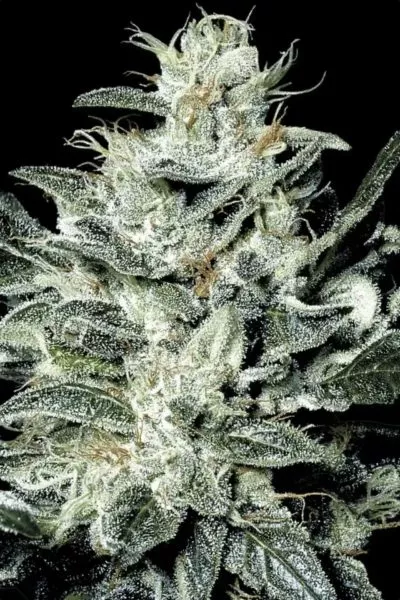
€39.50 – €108.00
€29.63 – €81.00 Select options This product has multiple variants. The options may be chosen on the product page -
€35.50 – €96.50 Select options This product has multiple variants. The options may be chosen on the product page
-
€29.50 – €79.00 Select options This product has multiple variants. The options may be chosen on the product page
-
€22.50 – €59.50 Select options This product has multiple variants. The options may be chosen on the product page
Mistakes To Avoid when Fimming Cannabis
Fimming Cannabis In Flower:
Only ever perform this plant training technique during 18/6 and when plants have the time to recover and return to normal vertical growth. Fimming Cannabis when plants are producing buds will cause serious amounts of stress and inhibit flower production.
Using Blunt Scissors:
The trick to fimming Cannabis is to use a clean and sharp pair of scissors and to achieve a clean sideways snip. Using blunt scissors will only jeopardize the amount of foliage that is left behind.
Fimming Autoflowering Cannabis Plants:
It is a bad idea to apply fimming to autoflowering cultivars as this will cause plants to become stunted and produce very little flower.
The Benefits Associated with Topping Cannabis
Topping encourages the development of multiple main colas, leading to higher yields in the flowering stage.
- It helps maintain a uniform canopy, which is beneficial when growing under artificial lights.
- This technique reduces overall plant height, making it ideal for indoor growers with limited vertical space.
- It works well when combined with other training techniques like low-stress training (LST) and SCROG setups.
- Topping can help increase light penetration and airflow to the lower branches, reducing the risk of mold and pests.
How Does Topping Cannabis Plants Work?
Topping works by permanently stopping the main stem from growing, which forces the plant to redirect its growth hormones to the lower branches. This change results in a more symmetrical, bushy plant with multiple main colas instead of one dominant central cola.
Unlike fimming, which allows the plant to regain apical dominance after a short recovery period, topping permanently alters the plant’s structure. Because of this, plants that are topped usually take a little longer to recover before resuming rapid growth.
How To Correctly Top Cannabis Plants
- Step #1: Before attempting any topping, make sure you have a sharp pair of scissors which have been sterilized (rubbing alcohol is a recommended sterilizer).
- Step #2: Do this process when the plant has between 5 – 8 nodes (and no less than 4). Identify the main growth shoot at the top of the plant and locate the node where two small auxiliary shoots are growing.
- Step #3: Cut the main growth shoot cleanly just above the node, ensuring that the two small shoots remain intact.
- Step #4: Allow the plant a few days to recover and observe how the two shoots begin to grow outward, forming two new main stems.
- Step #5: Repeat the process if necessary, topping multiple times during the vegetative stage to create an even bushier plant with more colas.
Mistakes To Avoid When Topping Cannabis
Using Dull or Unsterilized Tools: Always use sharp, sterilized scissors or pruning shears. A clean cut promotes faster healing and reduces the risk of infection or disease.
Topping Autoflowering Cannabis Plants: Topping is generally not recommended for autoflowering strains, as they have a short vegetative stage and may not have enough time to recover before entering flower, leading to stunted growth and reduced yields.
Not Allowing Recovery Time: After topping, plants need time to recover and redirect growth. Be patient and avoid over-training too quickly, as excessive stress can slow down development.
Topping During Flower: Never top a Cannabis plant once it has entered the flowering stage. This will cause unnecessary stress and can severely impact bud production and overall yield.
By properly topping Cannabis plants, growers can significantly improve plant structure, maximize yields, and create a more manageable, uniform canopy, making it an excellent technique for those looking to get the most out of their grow space.
Conclusion
The fim and top pruning techniques are simple procedures and low risk so long as plants are well established and healthy. The two techniques are relatively simuilar and both rely on a single cut.
In the cannabis veg stage, a plant is very verstalile and adpatable and will soon recover. However, it is important to appreciate that a plant is a living thing and does need that recovery time so always exercise patience and observe your plant’s response before attempting follow up pruning.


